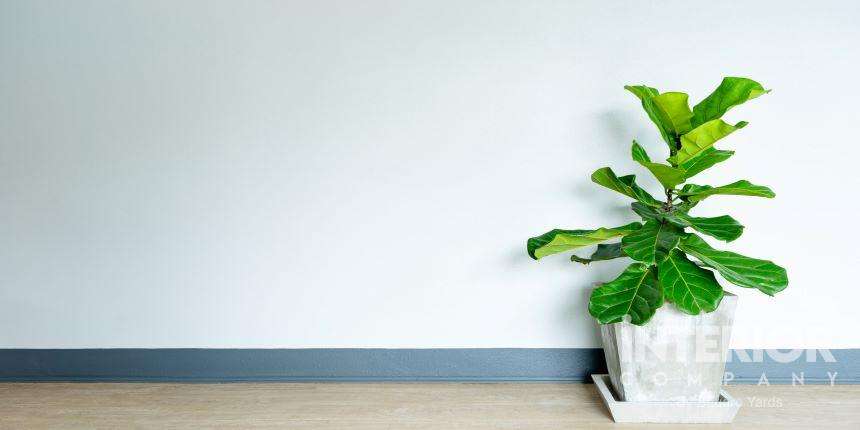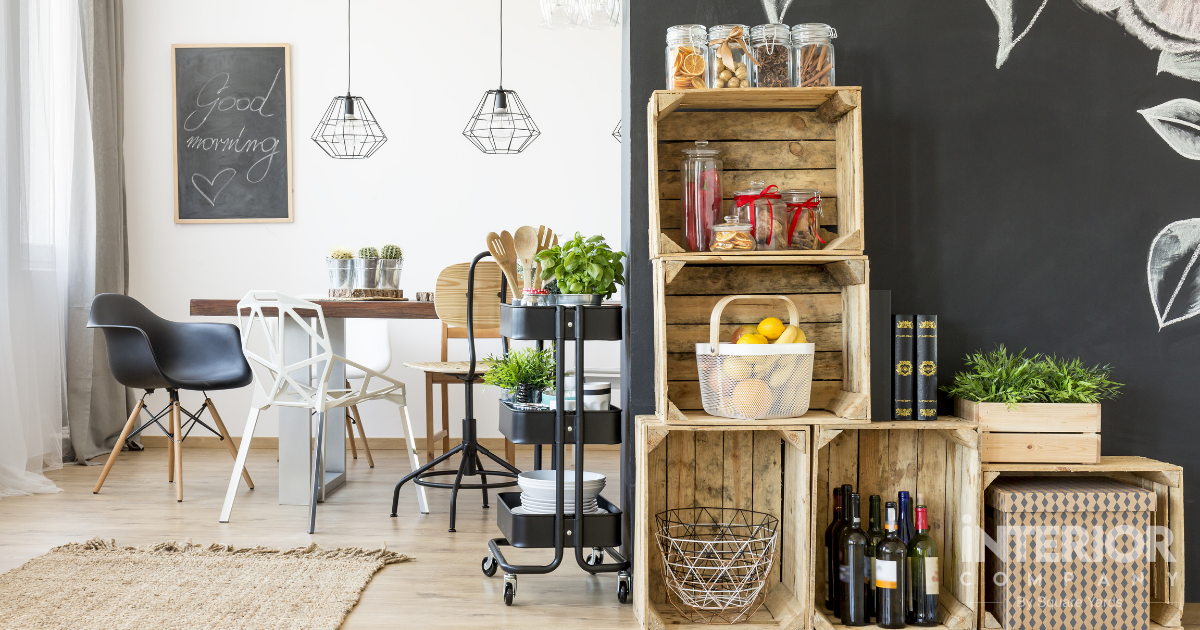- Kitchens
- Design Ideas
- Cities
- Trends
- Guides
- Price Calculators
- Our PortfolioNEW
- More
- Home
- Trends
- Furniture And Decor
- Indoor Plants
- Fiddle Leaf Fig Tree Indp
Guide to Growing a Fiddle Leaf Fig Tree with Secret Tips of Caring
The popularity of the fiddle leaf fig tree is completely justified, not overrated! Believe me! The beautiful shiny broad verdant leaves leave a long-lasting impact on the sight of many and for a reason. It’s the hot houseplant of the moment or of the last few years.
Table of Content
The Fiddle Leaf Fig Tree
Top Tips for Taking Care of Fiddle Leaf Fig
- 2.1 1. Purchase a Potted Fiddle Leaf Fig Indoor Plant
- 2.2 2. Placement of the Plant
- 2.3 3. Clean the Leaves on a Regular Basis
- 2.4 4. Offering the Right Amount of Sunlight
- 2.5 5. Maintain Humidity of a Certain Level
- 2.6 6. Use Liquid Fertilizer
- 2.7 7. Right Water Content
- 2.8 8. Maintain Temperature above 50F
- 2.9 9. Air Requirement- Avoid Overexposure
- 2.10 10. Pests- Use a Mild Insecticide Spray
- 2.11 11. Ensure that Your Fiddle Leaf Fig Has Perfect Drainage
- 2.12 12. Use a Fast-Draining Soil
The fiddle figs create an impeccable, architectural statements in any room of the house. But while it continues enticing you, the violin-shaped leaves of the plant can start dropping and getting brown spots, the moment things go south. And that is going to make you more distressed than proud.
But the good news is that once it becomes accustomed to the new habitat, the tree can grow up to 6 feet or even taller, making it a stunning jaw-dropping beauty. So, you have invested or planning to invest in bringing home such a not-so-inexpensive hot beauty, you must know a few secret tips to keep it alive and evergreen. Otherwise, there won't be any point in purchasing it at all.
Check out our guide on the top 12 ways to keep your fiddle fig healthy, lush, and vibrant forever.
The Fiddle Leaf Fig Tree

A native to western Africa, the fiddle leaf fig tree grows naturally in a lowland having a rainforest environment. Just as a banyan tree can branch out from the branches of another tree, a fiddle fig also possesses the ability to grow from the branches of other plants and then send its roots down to the ground. From there, it starts strangling the host tree to death, and then done!
Fiddle figs can mostly be found in the household for two most significant reasons: one they are beautiful, and the other is that they purify the air inside the house. Moreover, they boast beautiful and lush green leaves. They are easy to maintain and grow quickly. The best part is that you can even control the size of the plant by placing it in a pot of a specific shape and size. What's more? Trim its trunk, it will regrow.
Fiddle leaf fig in Hindi or Indian name is known as Ficus lyrata.
Top Tips for Taking Care of Fiddle Leaf Fig

Are you looking for fiddle leaf fig care? Well, you should know that this tropical plant is quite a melodrama. How? It loves a lot of; I repeat, a lot of brightness but doesn't like direct sunlight. It loves water and likes a wet foot but it can't withstand it for a long time. Likewise, there are a lot of things that the owner of this plant has to take care of to keep the plant healthy, green, and growing without any obstruction. They are as described below:
1. Purchase a Potted Fiddle Leaf Fig Indoor Plant
Buying a potted fiddle leaf fig online will ensure you have the right kind of soil required for the plant to grow. Besides, it will be potted well so that you do not need to spend time on choosing and putting soil in the pot, then planting it with extra care. Generally, a fiddle leaf fig demands dry or loose soil so that it can dry faster and be ready for the next watering session.
2. Placement of the Plant
The placement of the fiddle leaf fig is another significant factor in keeping the plant intact. The right place will help it in getting a proper light and the right place to grow. Hence, you must start with placing the fiddle in the correct spot in your home.
Basically, it's a tropical plant so, it doesn't like drafts and therefore, you must pick up an area that isn't near an air vent, or drafty window, or directly in line with an exterior door. The plant grows well in extremely bright but indirect light. Therefore, you can locate your fiddle leaf fig tree either close to a window or in a bright room, but not in a place where it can directly get in touch with the light.
Also, make sure that once you have situated it at a place, you do not move it! Fiddle leaf figs are a species of habit and love to flourish once they have found a happy and sunny home.
3. Clean the Leaves on a Regular Basis
Now that you have bought the plant and placed it in the best spot at home, you need to look after it leaves. If the leaves of your newly brought Fiddle Leaf Fig Tree are covered in water spots and dust, you must wipe down each leaf gently with a damp washcloth. You don't need to use coconut or any oil as they make the leaves of the plant suffocate over time. Follow the dusting process at least once a month to keep spider mites and other pests away from your extremely beautiful and shiny fiddle leaves.
4. Offering the Right Amount of Sunlight
As discussed in the second point, fiddle leaf fig requires a good amount of bright light but that shouldn't be the direct light. Bright light helps your fiddle leaf fig to grow and flourish excellently. Therefore, ensure that you have put it in such a spot that receives enough indirect sunlight or the plant will be totally baked. On top of that, some humidity would also do good to plants as it will keep them healthy and safe from drying.
Although moving this plant from one place to another is not recommended at all, you can rotate it often. Doing so will help the fiddle leaf fig to grow more evenly and protect it from bending on various sides. This is so because leaf figs are more likely to grow toward sunlight.
5. Maintain Humidity of a Certain Level
Another most significant factor is that helps the plant to thrive in your home. Fiddle figs like to grow in moist air and demand a humidity level of 65%. Unfortunately, most of our homes contain an average humidity level of 100%, which is quite less than the required amount.
If the leaves of your plants have begun turning brown, just set up a humidifier or simply mist the leaves. Moreover, you can also increase the humidity by putting the pot on a tray composed of water and gravel.
6. Use Liquid Fertilizer
If you want some catalyst to the growth of the fiddle fig tree, you will need a liquid fertilizer as it is what this tropical grower loves. Liquid fertilizer should have an NPK ratio (Nitrogen ' Phosphorus ' Potassium) of 3:1:2. If not, ensure that the ratio is as close as possible.
To mix the fertilizer, you can follow the instructions given on the bottle. Mix the fertilizer with water and then properly with the plant. You can feed fertilizers to your plant during the growing season that is while spring and summer.
Another alternative would be to fertilize the plant weekly using a diluted solution. In winter, the plant doesn't need any fertilizer, but you can still fertilize it with a mild solution.
7. Right Water Content
Just as do we need water to keep ourselves hydrated and energetic, fiddle leaf fig also requires water to live and thrive. But it doesn't imply that you will fill the container until the neck. There's a certain water content that you should let your plant drink or it will suffer badly.
Before watering the fig tree, make sure that the top one-inch of potting soil is absolutely dry. The best water type you can use is water at room temperature. It will work best for the plant. On the other hand, cold water will send a shock to the root of this tropical shoot.
Fiddle fig loves a thorough watering but hates continuous wet feet. Therefore, water it until the excess leaks from the containers' bottom. If required, place the plant outside to drain, and then put it back to its original place when the saucer is dry. In the beginning, the task may appear cumbersome and will need some trial and error to get right, however, with time, you will get it right.
8. Maintain Temperature above 50°F
We usually take care of everything, but forget about the temperature condition which is one biggest requirements for the plant to grow and thrive. Mainly, the fiddle leaf fig plant loves to habitat in warm, humid temperatures.
Therefore, it's better to keep the plant in a room with a constant temperature of 65-75°F. As long as it is possible, avoid keeping in it a room below 50°F, or it will start developing brown spots.
9. Air Requirement- Avoid Overexposure
Another most important factor for fig trees is the air. As mentioned earlier, these plants do not prefer drafty rooms, so fixing them away from HVAC vents and open doorways and windows would be a wiser option.
Also, overexposure to moving air is more likely to dry out the leaves eventually causing them to shed from the tree.
10. Pests- Use a Mild Insecticide Spray
Pests are one of the biggest issues with plants. If not taken care of, they will eat up the entire plant starting with its leaves. If we talk about Fiddle leaves, they are pretty susceptible to plants pests such as mealybugs, scale, mites, and aphids. Therefore, you must do a routine checkup for infestations for the foliage.
Now the question is- how will you find that your plant is infested with pests? Well, it's simple to find out. Look out for any unusual holes or growths, and inspect the underside of the leaves for minute pests or even web-like structures.
In case you find any bugs, use a mild insecticide spray to kill them. Later, use a soapy, wet cloth to remove them from the plant.
11. Ensure that Your Fiddle Leaf Fig Has Perfect Drainage
Ensuring proper drainage is one of the most crucial steps to keeping your fiddle leaf fig healthy and alive. Often, new owners and novices make the mistake of placing the plant in a container without any drainage or proper drainage. The absence of a draining system in the container makes the soil too moist. As a result, the roots of the plant will get moulds and various bacterial infections, and in some days, it will die.
You won't want that; Right? So, to ensure your plant keep flourishing and releasing oxygen, get proper drainage holes in the pot. Also, make sure that the soil of the plant is completely dried out before the next watering session.
12. Use a Fast-Draining Soil
Fiddle leaf figs are a kind of plant that doesn't like too much water. They are pretty vulnerable to bacterial infections and root rot if their root system becomes too soggy or soaked in water for a long time. Therefore, it's essential to use fast-draining soil for this indoor plant to keep it keep healthy and green.
Fast-draining soil offers a required amount of and even moisture to the plant. Besides, it also allows aeration to the roots so that they can breathe easily.
Top Interior Designers in Your City
Ready for a home transformation?
Let our designers assist you!
Recent Posts
Related Category
- Balcony
- Bedroom
- Home Decor
- Living Room
- Outdoors



































